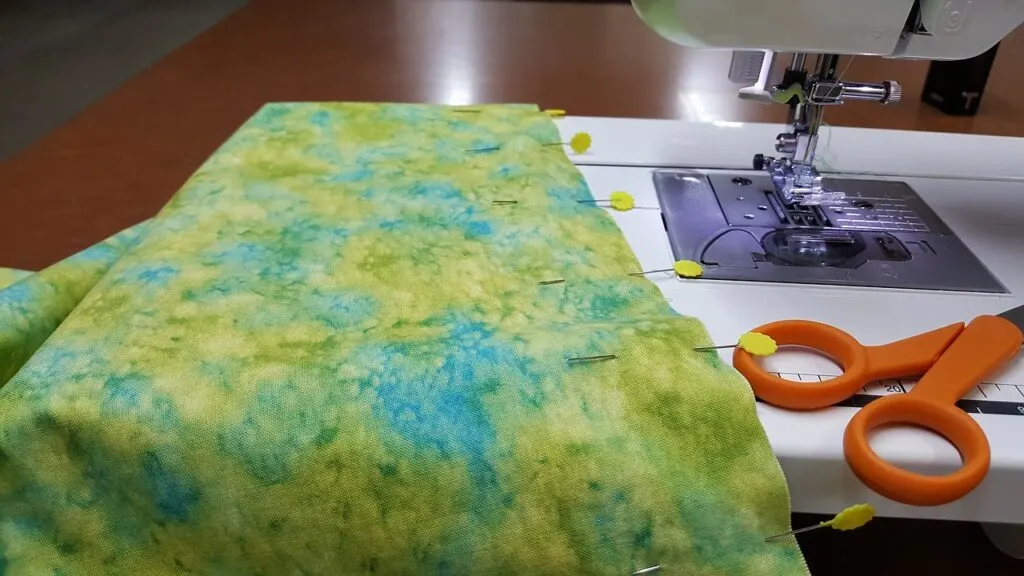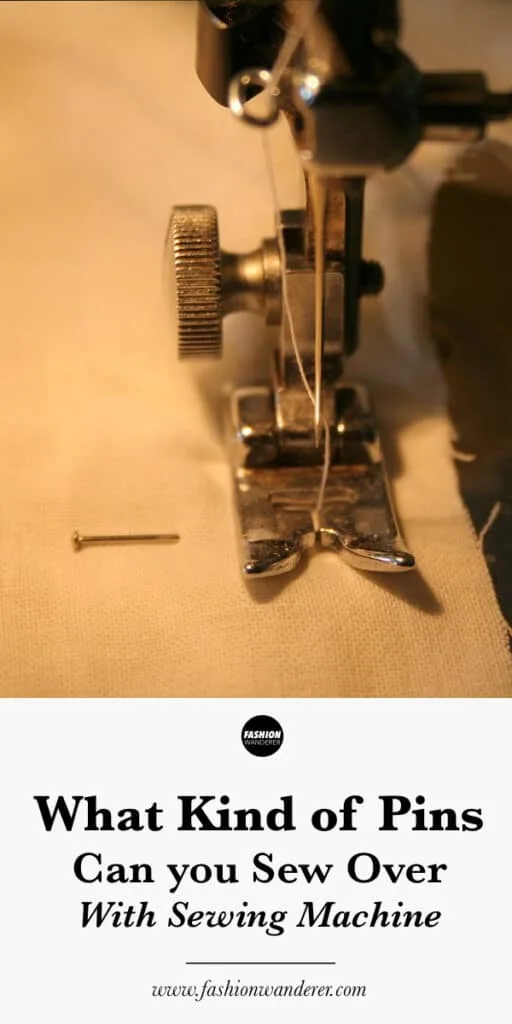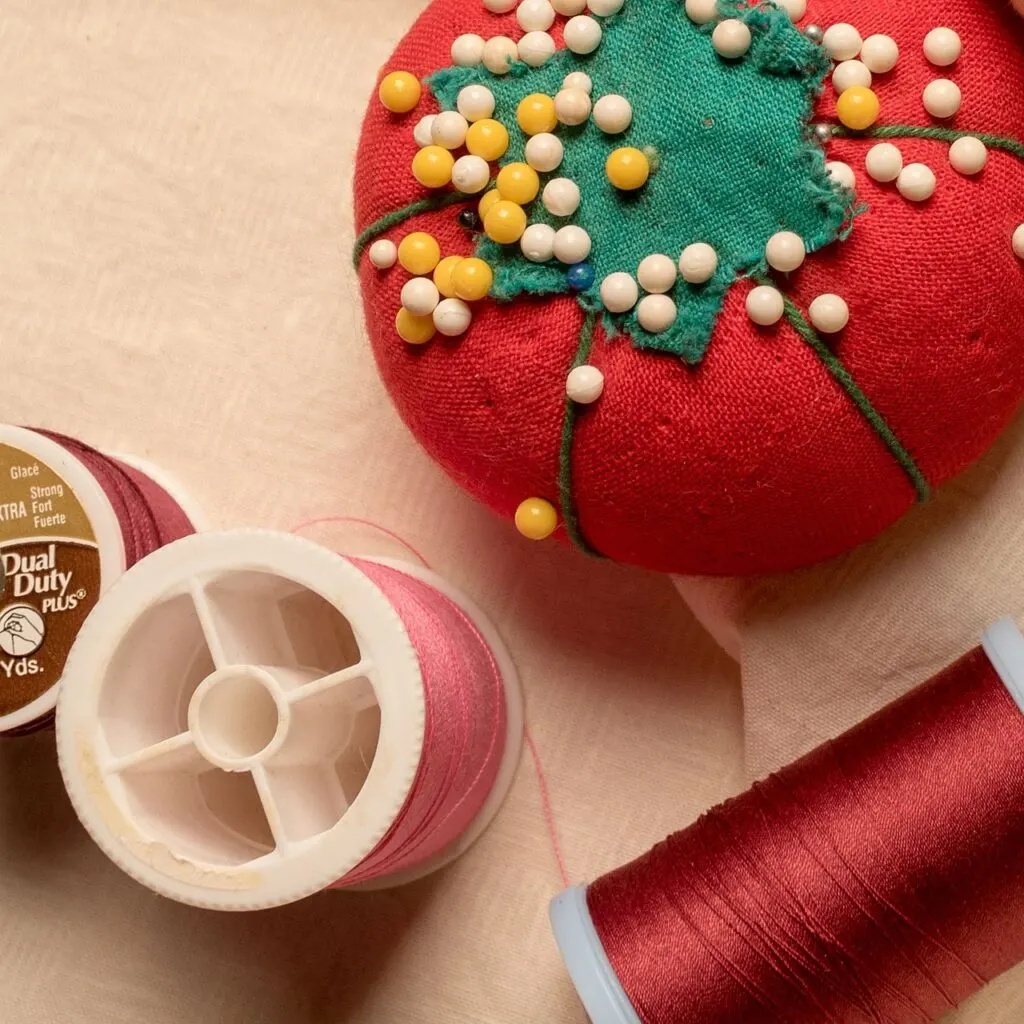Are you looking for more help when sewing and wonder what kind of pins you can sew over with sewing machine? As a beginner, working with pins you can sew over with any sewing machine are great tools to use for holding fabric together while sewing.
Not only that, pins are employed to hold the fabric together while attaching and cutting patterns. In fact, pins are quite convenient to use with a sewing machine since they can be easily removed while you are sewing seams to join fabric together.
So, can you sew over pins with a sewing machine? No, it is not safe to sew over pins with a sewing machine. The pins may break the sewing needle, get stick in the sewing machine or fragment and force shrapnel in your direction.
Whether you have Singer or Brother sewing machine, making a habit of using pins from cutting out fabric for patterns or sewing side seams and hemline is smart move to drastically improve your sewing quality as a beginner.
This article covers everything you need to know about using pins to secure fabric while sewing. Not only will pinning help you build confidence while sewing, it gives you the ability to easily achieve a clean finish to your DIY clothing.

Is it ok to sew over pins?
While first starting to sew, the question might appear in your mind whether it is OK to sew over pins. Although it might appear to save you time, the question is whether it will be the correct thing to do.
It is not recommended to sew over pins with a sewing machine. Instead, remove a pin as it gets close to the sewing foot, and then hold the fabric in place with your fingertips.
The reason for this is that you have the risk of ending up with a broken sewing needle. Moreover, your machine might get damaged as well.
In case the needle hits a pin, this can cause damage to your machine’s timing which could lead to an expensive service bill.
Can you sew over pins with a sewing machine?
This particular query is usually asked by sewers and also by individuals who are going to buy a new sewing machine. They like to know whether the new machine purchased by them will be able to sew over pins just like their old counterparts.
No, you should not sew over pins using a sewing machine. If the machine’s needle hits the pin, it could cause damage to the sewing machine or ricochet in your direction which could cause bodily harm.
While stitching, the needle might break and tiny shrapnel pieces might be thrown at your face. After the needle becomes broken, the pin might be decimated into pieces which you are not able to find.
There is a possibility for very fine pins to become bent when hit. Although the needle might not break, the fabric and the pin might become wedged into the material and cut the fabric.
Overall, it breaking a pin into the fabric can damage the material. However, shrapnel from the broken pin flying in your face is a hazard worth avoiding.
How to use pins safely?
It is essential to learn and implement the proper safety techniques while using sewing pins from the very start. Here are useful tips and tricks to use pins safely when operating a sewing machine:
Using pins with a conventional sewing machine
The raw edges of the fabric should be lined up and the pins have to be inserted perpendicular to the edge while the pin’s head is sticking to the right side. It is essential to learn how to remove the pins prior to reaching the sewing foot and needle without unsettling the fabric.
Consider slowing down the sewing machine or even stopping it all together while approaching a pin. Avoid sewing over the pins as you might be breaking the needle or damaging the fabric.
Using the pins with a serger
While sewing with a serger, the pins have to be placed outside the seam allowance. Additionally, they have to be aligned parallel to the fabric’s edge.
While stitching, place the pins to the left of the knife and needles. In this way, the fabric can be held properly, and you, as well as the machine, will remain safe from hazardous fragments.

Tips for using sewing pins
The topic of pinning involves much more than just putting the pins in the fabric. Here, we have shared a few tips for making use of sewing pins.
1. Make use of pins with the proper size
Apart from using the right type of sewing pins, it is also important to use the pins of the right size. Pins that are too large will leave permanent holes in the fabric.
In case the fabric is delicate, damage can be reduced by making use of silk pins or glass-head pins, which are extra-fine and leave a tiny impression.
2. Pin parallel
While pinning patterns to the fabric, always orient the pins parallel to the pattern’s edge. They have to be placed approximately one-quarter of an inch from the edge, and ensure that the pin does not go beyond the pattern when you reach a corner.
In case it does, there is a possibility for you to cut right through it, thus damaging the scissors. Dull scissors are not a fabric’s friend, so keep those scissors sharp and away from things that could bend the cutting edge.
3. Keep pin cushion or magnet wand nearby
If you end up having pins and need to use your sewing machine to secure a stitch, the slow down the sewing and pick up the removed pins right away. Take the time to grab all the pins before it touches the needle to avoid the pins falling inside the machine and causing damage.
Sometimes it’s hard to see the pins against the fabric, so it can be get a bit poky if you grab a bunch of fabric with a pin tucked in a fold.
A magnet wand is handy for gathering dropped needles without pricking your fingers with the pointy end.
4. Pin Close Together
When sewing long and straight edges, place the pins 1 to 2” apart. And for curved seams, use more pins about ½” apart.
The more pins, the easier it is to get the curves and angles you are trying to achieve. Pinning closely will help you achieve the professional finish that your garment deserves.
5. Never use your mouth to hold the pins
If you have been using your mouth as third hand to hold the removed pins while sewing, stop this bad habit. You should never use your lips to hold needles or pins.
If you get a sudden surprise from a dog bark or a family member that walks in the room and catches you off guard, then it might accidentally get stuck in your mouth, swallow it, or even drop on the floor and get lost in the carpet.
Always store unused pins inside a pincushion or attached to a magnet wand.

Types of sewing pins to use in sewing machine
It is a fact that pins are an imperative sewing tool that you must have in your arsenal. However, these tiny objects are going to deliver the goods when you choose the right type of pins.
Depending on the fabrication, consider selecting the right type of pins to avoid damage on fabric by making avoidable holes while indicating the seams.
Applique pins: The appliqué pins are tiny pins very handy for pinning small areas, and they can also be useful in case you require plenty of pins within a small space (for instance, curves).
Ball-point pins: The ball-point pins come with a rounded end and are suitable for knit fabrics since they will be able to slip between the fibers instead of cutting through.
Glass head pins: These types of pins have got this name due to the colorful glass bobble. On most occasions, these are stainless steel or nickel-plated and are quite strong as well. This implies that they will not bend easily unlike most of the other types.
Plastic head pins: The plastic head pins have also a colorful bobble at the top just like the glass head pins. However, these have been made from plastic, so refrain from ironing over them. These are likewise quite inexpensive and are ideal for an extensive range of projects that do not require extra special attention to fabric detail.
Sewing Over Pins: Final Thoughts
With many types of sewing pins available for different types of sewing projects, it can be rather overwhelming to figure out which ones to use. From learning how to pin fabric to pattern to pin fabric pieces together when using sewing machine, use these tips and techniques to further your sewing experience and accomplish professional look garment.
Ultimately, it is important that you don’t sew over pins with a sewing machine. Doing so can cause damage to your machine, break the sewing needle, or even worse result in shrapnel that can cause you harm in some way.
Pin can be a dangerous part of sewing. Doubtful that anyone enjoys a prick in the finger.
Keep track of your loose pins by storing the in a pincushion or attached to a magnetic wand. That way they don’t get lost in the fabric tucks or fall into the carpet, ouch!
There you have it, everything that you need to know about sewing with pins. Know you know all the reasons why it is important to never sew over your pins and practice good habits when pinning your DIY clothing.
